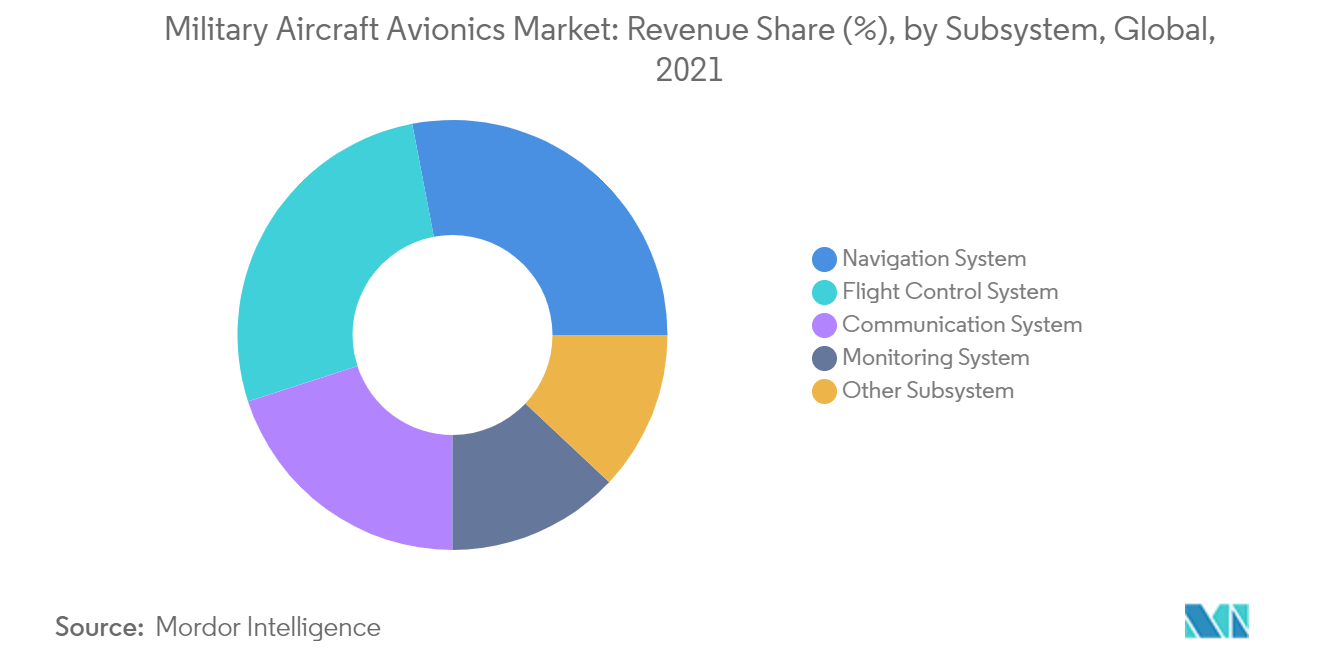Market Trends of Military Aircraft Avionics Industry
This section covers the major market trends shaping the Military Aircraft Avionics Market according to our research experts:
Flight Control System is Expected to Register Highest Growth During Forecast Period
The military aircraft's flight control systems (FCS) include hardware and software systems for primary and secondary cockpit flight controls such as autopilot, data acquisition systems, flight recorders, aircraft management computers, active inceptor systems, and Electrohydrostatic Actuation (EHA) systems, among others. All military aircraft flight control systems are currently developed based on the Fly-by-Wire (FBW) technology. The aircraft OEMs are partnering with the avionics manufacturers to develop and integrate advanced flight control systems onboard the new-generation aircraft, which are planned to be inducted into service in the coming years. Also, companies are currently focusing on integrating advanced technologies like artificial intelligence (AI) and big data into computers to enhance the autonomous operations of human-crewed and uncrewed aircraft. For instance, in June 2019, Airbus Defense and Space partnered with Ansys to develop a new flight-control solution with sophisticated artificial intelligence (AI) for the Future Combat Air System (FCAS). The OEM plans to introduce autonomous flight capabilities onboard the aircraft by 2030. Such partnerships further enhance aircraft capabilities and are expected to accelerate the market's growth in the coming years.

North America Accounts for Major Market Share in 2021
North America is dominating the military aircraft avionics market in terms of revenue in 2021, owing to the large-scale procurement of military aircraft by the United States. The United States is the largest military spender in the world, with USD 801 billion in military expenditure in 2021. The US Air Force has spent the past four years improving the fleet mission-capable rates, reaching its lowest point (below 70%) in 2018. However, the rate is still around 72% as of December 2021. This has raised concerns and pushed the government to fill the gaps through new aircraft procurement and upgrade mission-related systems in the existing fleet. The US Air Force operates one of the oldest aircraft fleets compared to Russia and China's adversaries. Fielding of new aircraft has slowed the increase in fleet age, but the US Air Force is not buying enough new aircraft to sustain its force structure at its current size. The average age of some fleets is high, at 45 years for bombers, 49 years for tankers, and 29 years for fighter/attack aircraft. Also, the US armed forces are upgrading its existing fleet with advanced avionics to support a wide range of missions. For instance, In February 2022, the USAF finally announced its plan to upgrade its 608 F-16 Block 40 and 50 in one of the largest modernization initiatives in history. The F-16 Fighter jets will get up to 22 modifications that will increase the aircraft's lethality and ensure that the fourth-generation fighter can confront current and future threats. The 22 modifications include an Active Electronically Scanned Array radar, new cockpit displays, a mission computer, and a new database. Such investments of the countries in North America to enhance their aerial capabilities are anticipated to propel the growth of the market.

